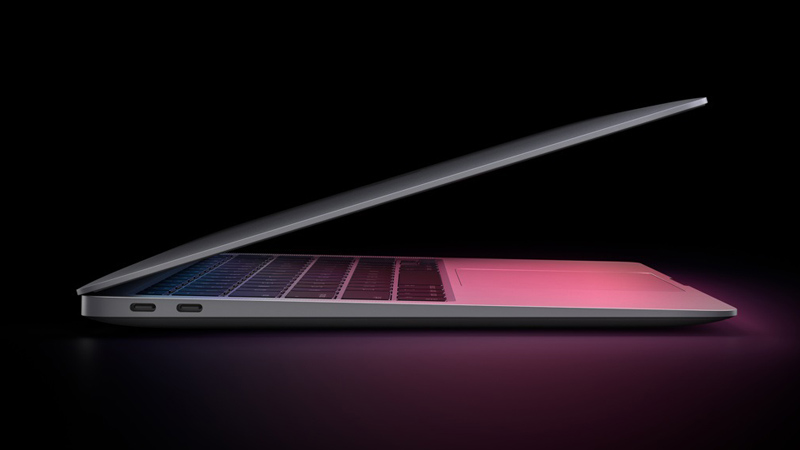A quick guide to successfully reset your Apple laptop to its factory settings.

Performing a laptop factory reset can solve a number of issues, like slow performance, viruses, or unwanted software. But that is not the only time you might need to reset your laptop. For example, if you consider selling your used Apple computer, resetting it to its original state is a must. You want to remove your data and prepare your Mac for the new owner.
In this article, we will walk you through the steps of the Apple laptop factory reset process.
On the other hand, PC users might find How to factory reset a Dell Laptop and How to factory reset an MSI laptop blog posts helpful.
What Does it Mean to Reset to Factory Defaults?
A factory reset returns your Apple device to its original out-of-box setting by erasing all the data, installed applications, and programs. Some laptop owners choose to try a system restore in an attempt to fix performance issues. You most definitely need to run a factory reset if you gift, donate, or resell your preowned Apple computer.
Things to Do Before an Apple Factory Reset
Before proceeding with a reset of your used MacBook, consider doing the following:
- Back up your MacBook. Using an external hard drive or a cloud service (iCloud), copy and save everything you might need in the future.
- Sign out of your iCloud account. This one is crucial, as the active iCloud pretty much locks the Mac to your settings, plus it ensures free access to your data. To sign out of iCloud, follow this string: go to the Apple Menu > System Preferences > Apple ID. Then, select iCloud and Turn off Find my Mac. Finally, click on Overview and Sign out.
- Sign out of your iTunes. To do that, select Account > Authorizations > Deauthorize This computer.
- Sign out of your iMessage. First, please open the iMessage app. The next step is to select Messages and then Preferences. Click on iMessage and sign out.
- Unpair Bluetooth devices. You can unpair your headphones, Apple watch, keyboards, etc., by going into the Apple Menu and clicking on System Preferences. Then go to Bluetooth to complete the unpairing.
Whether you want to sell your preowned Apple laptop or simply to improve its performance, backing up your files first is a smart thing to do. In addition, we would strongly advise creating an external backup for just in case situations. When resetting a used Apple computer, there is always a risk of something going wrong or “bricking” the laptop, resulting in data loss.
Steps to Factory Reset an Apple MacBook Laptop
Once you have your backup and signed out of all linked accounts, the next step is to proceed with an actual factory reset. Now, the procedure may differ, depending on the type of device and software you are using.
Reset a MacBook Pro or a MacBook Air Laptop
1. Power down your laptop and then press the power button again.
2. While the system starts, hold down the “Command” and “R” keys together. Release the keys once the Apple logo comes up on your screen.
3. Select Disk Utility in the Recovery Mode menu.
4. Choose your startup disk (which should be “Macintosh HD”) and click the Erase button.
5. A pop-up window should appear. Select Mac OS Extended (Journaled) and click on Erase again. In case you want to encrypt your disc, choose Journaled, Encrypted option. You’ll need to create a password on this step.
6. Select Quit Disk Utility in the Disk Utility menu. A window will appear, giving you the option to reinstall macOS.
7. Select Install MacOs and let the process run. Make sure your Apple laptop is connected to the power source during this time. Once the macOS installation is complete, the system will reboot.
How to Reset an Apple Silicon-Based Laptop?
If you have the latest Apple laptop with the M1 chip, factory reset process steps are slightly different. Specifically when it comes to accessing the recovery partition.
To get started, power down your Apple M1 chip-based Mac. For that, you can either press the power button or open the Apple Menu and opt for a Shut Down. Once the system is off, press and hold the power button until you see “Loading startup options” on your screen. Select Options from the startup screen to enter macOS Recovery. The further steps are identical to what was already described above.
And if it so happens that your computer gets frozen and you cannot proceed, try the Control + Command + Media Eject shortcut to quit the reset and reboot.
In Conclusion
We hope that this guide on restoring an Apple laptop to its factory settings may be helpful to our readers. But if your device no longer functions properly, perhaps the time to part with it has come. And with Gadget Salvation, you can do a used Macbook trade in with ease! We offer cash for a wide range of preowned electronics, such as PC laptops, smartphones, tablets, and more! Furthermore, we guarantee a fast turnaround and fair payouts via PayPal, Zelle, Venmo, or a paper check. So visit our site today to check how much your used gadget is worth!









